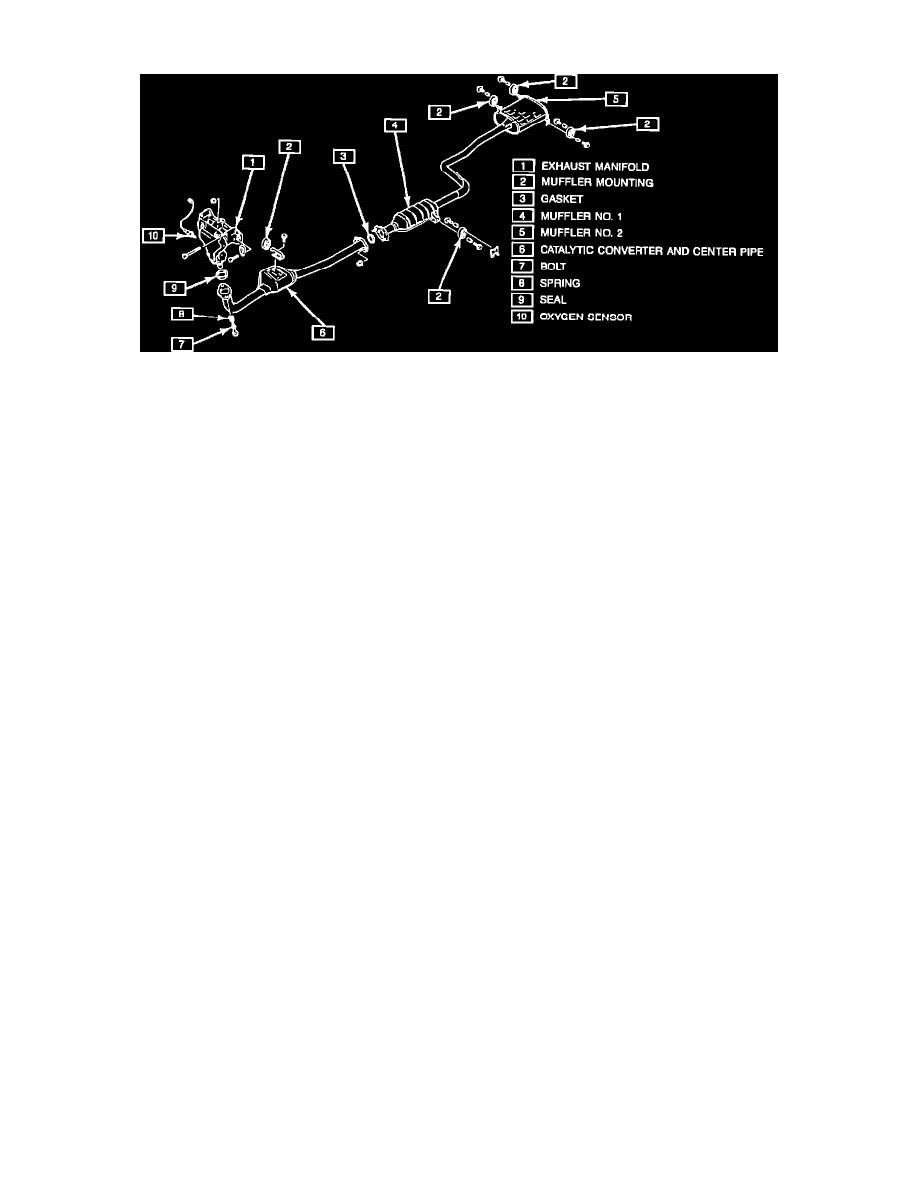Metro L3-61 1.0L (1990)

Catalytic Converter: Description and Operation
Exhaust System
Catalytic converters are used to convert carbon monoxide (CO), hydrocarbon (HC) and oxides of nitrogen (NOx) into water vapor (H2O), carbon
dioxide (CO2) and nitrogen (N). The catalysts used to create these conversions are platinum, palladium and rhodium.
During operation, as the air fuel mixture is leaned, the converter's efficiency for converting HC and CO increases but decreases for NOx. If the air fuel
mixture were increased, NOx formation would be reduced, but HC and CO would be increased. In order to optimize the simultaneous reduction of all
these pollutants, the fuel system must be able to provide an air fuel mixture of approximately 14.7:1. In order to provide this air fuel mixture, a feedback
fuel delivery system is used along with this type of converter.
As the exhaust gases flow through the converter a chemical change takes place. This change causes the temperature inside the converter to be higher than
the temperature of the exhaust gases when they leave the engine. Due to this increase in heat, the converter is insulated so that its outside temperature is
about the same temperature as the muffler. However, due to its solid mass, the converter remains hot much longer than the muffler.
The body of the catalytic converter is made of stainless steel designed to last the life of the vehicle. Excessive heat can bulge or distort the converter.
Since excessive heat build up is not the fault of the converter, the carburetor or ignition system should be checked whenever a converter is damaged by
overheating.
